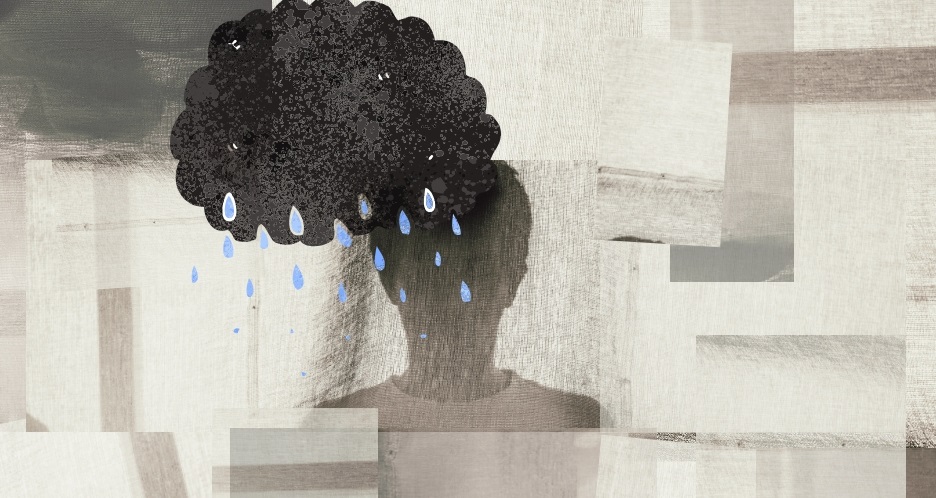A recent Men’s Health Research study of 100 Canadian men has found that men with prostate cancer who also reported comorbidity (additional health problems) were at greater risk of depression than those that had prostate cancer, but no comorbidity. The expression of depressive symptoms were also found to differ, with each of the two groups displaying unique male-specific depression symptoms.
What are male-type depression symptoms?
What does depression look like? Search the internet and the most common picture is that of someone with their head in their hands - looking distressed, tired, sad, or even crying. But depression in men may look very different from these more stereo-typed images. “Although research on male-type depression symptoms has been around in the research literature for a little over 20 years, they still aren’t widely accepted in primary care settings, or in any of our diagnostic criteria for mood disorders,” said the study’s lead author, Simon Rice, a Senior Research Fellow and Clinical Psychologist based at Orygen, the National Centre of Excellence in Youth Mental Health at the University of Melbourne, Australia. These lesser-known male-type depression symptoms include ignoring or suppressing negative emotions, using alcohol or drugs to cope, becoming angry or aggressive, or taking unnecessary risks. “This means there is a challenge for researchers to undertake high-quality studies that might help improve our understanding, and eventually support the awareness of men’s depression symptoms and help earlier identification of men at risk,” said Rice.
The study
Taking on this challenge, Rice and colleagues evaluated both ‘stereotypical’ and male-specific depression in men with prostate cancer and comorbidities and men with prostate cancer but no comorbidities, comparing them through two separate scales; the Patient Health Questionnaire – 9 (PHQ-9) and the Male Depression Risk Scale – 22 (MDRS-22). “The MDRS-22 measures 6 different domains that might place men specifically at risk for depression, and the PHQ-9 scale measures the 9 symptoms of depression currently used for a diagnosis in healthcare settings, so it is a good point of comparison,” said Rice.
The PHQ-9 includes standard depression symptoms, like sadness, guilt, having low energy and concentration problems, while the MDRS-22 takes a broader view, and assesses behaviours that may be more aligned with men’s experiences of distress or “male-type depression symptoms”.
Surprising finds
“In general, we found that men with prostate cancer who also reported comorbidity were experiencing greater mood problems,” said Rice, “But the most surprising finding was that the MDRS-22 cut-off score was able to identify proportionally more men in this sample who endorsed experiencing recent suicidal ideation than did the PHQ-9. This suggests that the MDRS-22 might be a useful supplemental screening tool for men at risk.”
Along with being at high risk for depression, the study also found that those participants with prostate cancer and comorbidities were at higher risk for emotional suppression and drug use, which are considered male-specific symptoms. While comorbid health challenges can be difficult for anyone to manage, Rice said this can especially be true if they are related to a chronic illness, such as prostate cancer. “It may be the case that men with prostate cancer who also have comorbidities are doing the best they can to carry on, and part of this might involve ignoring negative emotions. This can be an effective strategy in the short term, but if used often, it may get in the way of other things that could be helpful,” said Rice.
This finding partly explains why many men are going undiagnosed said Rice, “because suppressing emotions is an internal experience (and one that clinicians can’t see) it might mean that underlying low mood is not identified by a treating clinician, preventing management of the depression.”
Stay tuned!
With the increasing need for research around diagnosing male depression, Rice will be starting soon on developing a briefer version of the MDRS-22 that can be used more readily in primary care settings. As for what can be done now? Rice asks clinicians and researchers to take a broader view of what depression in men might look like. “Existing qualitative research literature of individual interviews and focus groups commonly refers to men becoming more irritated and angry when depressed, and sometimes engaging in risk-taking behaviors. Our diagnostic systems don’t take this into account and might mean we are under-identifying those with a need for more support or different support.”
